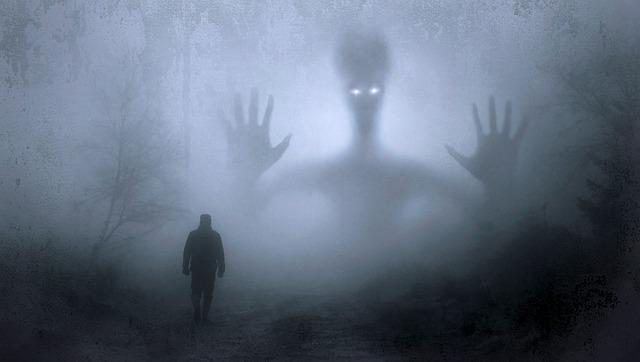Search here

05-Sep-2022
Nightmares and the Brain
While dreams are considered to be recent autobiographical episodes that merge with memories to create new memories for future reference, nightmares are dreams that evoke strong but negative emotional responses. Dreams are part of the standard brain network (a system of interconnected regions that includes the thalamus, medial prefrontal cortex, and posterior cingulate cortex) and remain active during relatively quiet periods. REM sleep is an example of a quiet period.
This sleep phase is characterized by rapid eye movements, increased heart rate, and increased respiratory rate. REM sleep is divided into 4-5 stages, which together account for about 20% of our sleep. During these REM episodes, brain structures in the canonical network are affected, and dreams that are vividly recalled during REM sleep are common.
Nightmares usually occur during periods of sleep with prolonged REM sleep. I usually sleep. As you prepare to wake up, your memories begin to coalesce and consolidate. We dream when we wake up from REM sleep. Because you are awake and dreaming, the images you imagine while dreaming are remembered, including vivid and often frightening images that appear during nightmares.
Scary sleep
Nightmares are often more common in children than in adults and are usually confused with nightmares that are more dramatic than nightmares. Night terrors are not technically a dream, but rather a sudden, fearful reaction that occurs during the transition from one stage of sleep to another. They usually occur 2-3 hours after sleep onset, when deep non-REM
sleep turns into REM sleep. Night terrors often make children kick, scream, and shake, but most children don't remember them because they don't have nightmares during REM sleep.
'Night anxiety is a phenomenon that occurs in the deepest parts of non-REM sleep when the brain is less active,' says Barrett. 'The child wakes up with his heart pounding in the horror of the night. But there is no feeling of fear, it is just a scary image. However, there are no conversations like you experience about dreams, including nightmares.”
John Winkelman, AM '83, MD '87, Ph.D. '83, an HMS associate professor of psychiatry who studies sleep disorders at Massachusetts General Hospital, says nightmares are often forgotten the next day because they occur during what is called short wave sleep. When neurons in the neocortex, the center of higher mental functions in the brain, are less active.
Nightmares can occur for many reasons, such as stress, anxiety, irregular sleep, medications, and mental disorders, but the most studied cause may be post-traumatic stress disorder (PTSD).
Traumas and nightmares
Nightmares can occur for many reasons, such as stress, anxiety, irregular sleep, medications, and mental disorders, but the most studied cause may be post-traumatic stress disorder (PTSD). Nightmares are a common complaint among people with PTSD and are one of the criteria used to diagnose the condition. A 2009 study published in Clinics in Sleep Medicine by the University of Pittsburgh School of Medicine found that 80 percent of people with PTSD have frequent nightmares. A 1998 study analyzing data from the National Survey of Vietnam Veterans of Corrections found that 52 percent of veterans had frequent nightmares, compared to only 3 percent of civilian participants. People with PTSD not only have frequent nightmares, but they also occur frequently, sometimes several times a week.
According to the US Department of Veterans Affairs National PTSD Center, post-traumatic nightmares often have elements similar to the trauma itself. About half of people who experience nightmares after a traumatic event have nightmares that relive the trauma. People with PTSD are more likely to relive their trauma. In post-traumatic nightmares, areas of the brain involved in fear behavior, including the amygdala, a deep brain structure that works to detect potential threats, can be hyperactive or hyperactive, Barrett said. 'Post-traumatic nightmares are no different than flashbacks or daytime nightmares,' he added.
Ending rewritten
People severely affected by hives can be treated in a variety of ways. First, if there is a source of stress, you need to identify it. Once a stressor is identified, you need to find a way to manage it effectively. For nightmares caused by drugs, you may need to change your dose or introduce a different drug. People who have post-traumatic or chronic nightmares seek psychotherapy or medication. Psychotherapy for nightmares is called Imagery Repetition Therapy (IRT). In this type of cognitive therapy, people, especially those who repeatedly experience certain types of nightmares, are asked to remember and write down the nightmare, then rewrite the nightmare and end it positively. Then use the rewritten version before you sleep to remove unwanted content while you sleep. IRT has been studied in several studies and has been shown to reduce the frequency of nightmares, says Winkelman.

Student
An inquisitive individual with a great interest in the subjectivity of human experiences, behavior, and the complexity of the human mind. Enthusiased to learn, volunteer, and participate. Always driven by the motive to make a difference in the sphere of mental health - and normalize seeking help through a sensitive and empathetic approach
Join Our Newsletter
Subscribe to our newsletter to receive emails about new views posts, releases and updates.
Copyright 2010 - 2025 MindStick Software Pvt. Ltd. All Rights Reserved Privacy Policy | Terms & Conditions | Cookie Policy